Dean &
Ginny's excellent adventures... Main
Adventure Page
Florida--02/11:
<<
Part 1
Part 2
Part 3 >>
Part 4 >>
|
|
After we left the marsh, we stopped to talk to the
resident sheriff, who told us about some possible bear markings on a
palm tree. He gave Dan good directions. >>
Dan and Erica were quite excited to hear about a
bear in the preserve. So we went to the palm to see for
ourselves.
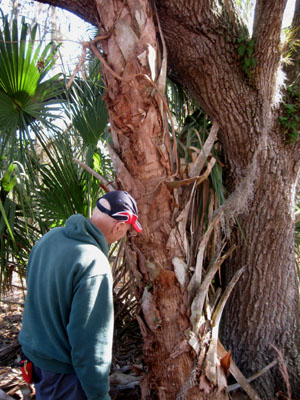
Judging by the height of where something had
scraped the boots (left over palm fronds) from the tree trunk, it
might have been a bear, but we didn't see any actual claw
marks.
I was just as interested in the top of this tree
and how it and the live oak competed for light and space. >>
|
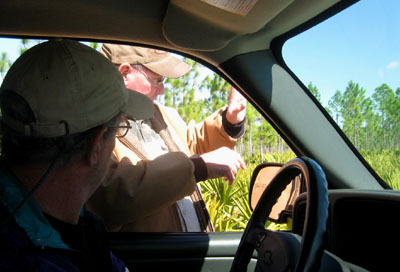
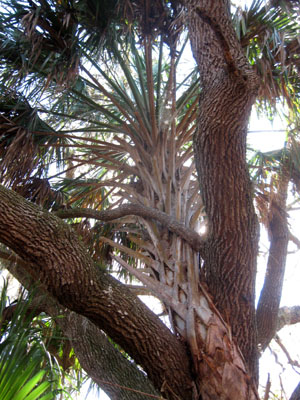
|
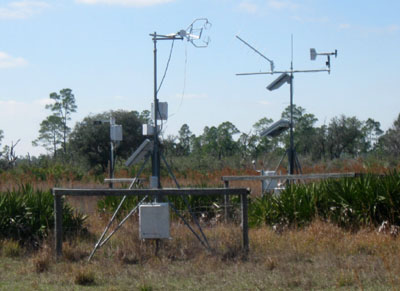 |
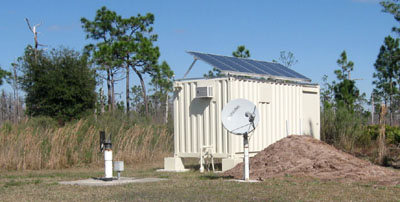
The Conservancy has installed various instruments to
measure not only the weather conditions, but also the state
of the aquifer, the storage and release of carbon in these
natural conditions, and seismic conditions.
Impressive. |
|
|
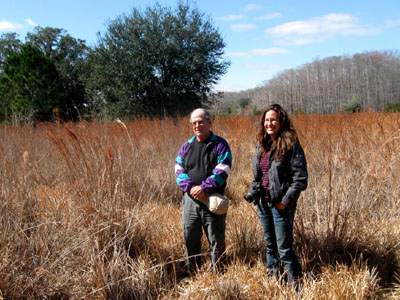
Our excellent guides Dan and Erica.
|
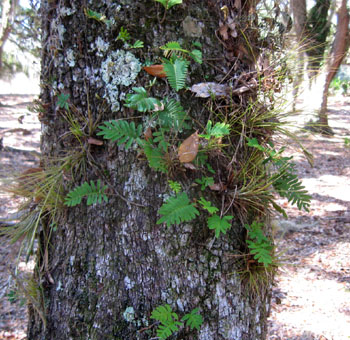
|
|
|
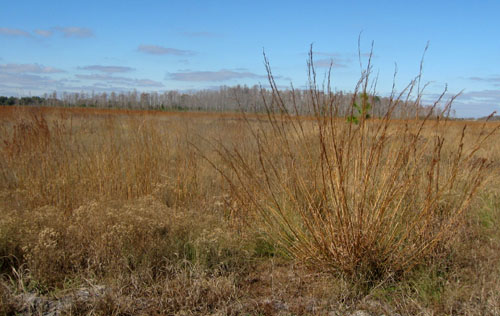 From
small ecosystems such as the bark of the oak tree (above) to the large
ecosystems such as the grasslands, we enjoyed our private tour and were
impressed with everything the Conservancy is doing here. From
small ecosystems such as the bark of the oak tree (above) to the large
ecosystems such as the grasslands, we enjoyed our private tour and were
impressed with everything the Conservancy is doing here.
Then it was off to Lake Kissimmee State Park, only 11
miles away as the crow flies, but nearly 30 miles by road. We had a
campsite reservation, which was good, because the parks in Florida are
full during the winter, but even fuller on weekends. This was a Tuesday
night, but it was still full.
|
|
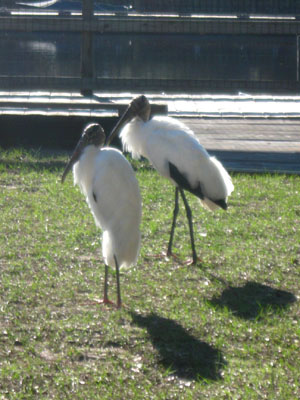
|
<< A couple of
ironheads (aka wood storks) served as a greeting committee near
the docking area as we drove around the park before we pulled into
the campsite.
The next morning we returned to the lakeside in time to enjoy
the sunrise. Just beautiful...
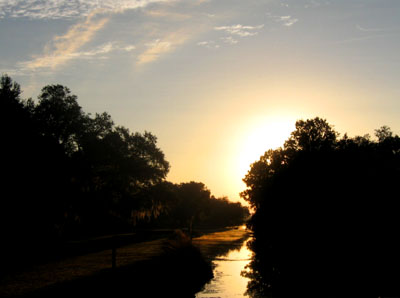
|
|
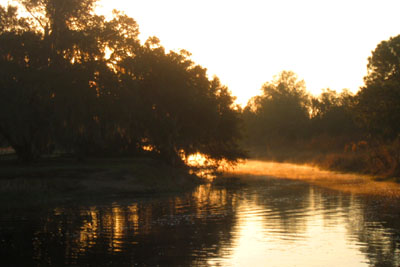
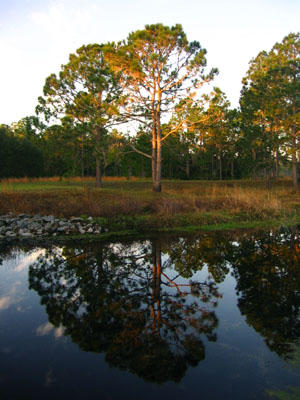
|
|

|
As we walked back from the lake to the campsite,
we caught a variation of our "excellent adventure"
shadow on the
grasses.
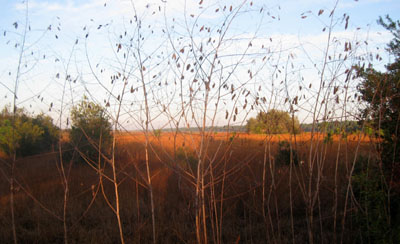
On the weekends, there's a section of this park called Cow Town
where
reenactors dress up like Florida cracker cowboys and do their
demonstrations of Florida ranching.
|
|
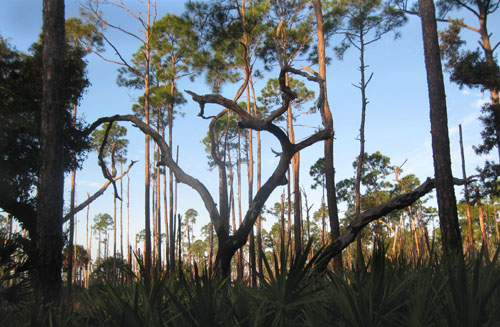
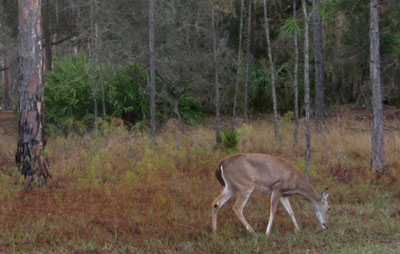
|
|
|
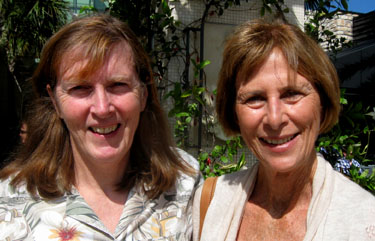
Ginny and Sue Dingwell, co-bloggers for the Florida
Native Plant Society.
|
We left Lake Kissimmee after sunrise and headed
south to Palm Beach Gardens. We enjoyed a late lunch with our friend Lucia
Robson, who was down from Maryland for a couple of weeks, and
Sue and Randy Dingwell, who live in Palm Beach Gardens.
After a long, conversation-saturated lunch, we
headed down to the Air Force base at Homestead. Stayed the night in the
base hotel and left early in the morning to head to The Keys. We
keep coming back because of its truly tropical weather and
wonderful natural areas to see.
Our first stop this trip down The Keys was
Lignumvitae Key State Park, a 280 acre island about a mile out on
the bay side of Islamorada (at mile marker 78.5). The only way to get there is by
boat. We had our kayaks and decided to paddle out since the
park was open on Thursday through Sunday. What we didn't know
until we got out there is that the tours of the house and the
trails are given only on Friday through Sunday. Dang!
|
|
Still, we had a nice time on the long paddle
out to the island and back, and the central part of the island was fun to see.
Here's the park's website,
which if we had read more carefully, we would have known about the
tour schedule.
|
|
A combination of cormorants and gulls sitting on these stakes
greeted us as we paddled past them. The island is in the background.
We learned from the ranger that after a boat runs aground, they
plant new grasses on the bottom where the vegetation had been scoured
away. Then they place these stakes so the birds will sit on
them and add extra fertilizer to help the new plants get started.
|
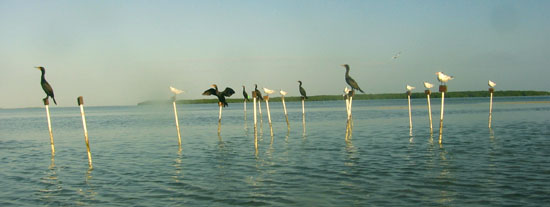
|
|
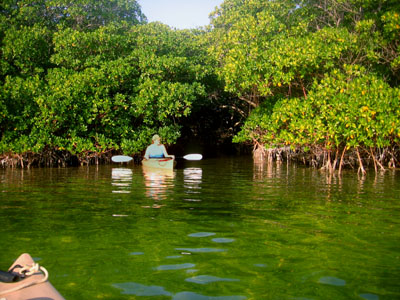 We
paddled over some very shallow sand bars on our way out to the
island. We thought we might have to get out and portage over
these areas, but we didn't. There was always just enough depth to
paddle across. We
paddled over some very shallow sand bars on our way out to the
island. We thought we might have to get out and portage over
these areas, but we didn't. There was always just enough depth to
paddle across.
The shoreline of the island was completely
surrounded and protected by red mangroves, which can live in the
salty wet environment. Their roots form stalks to hold them above
the normal waterline.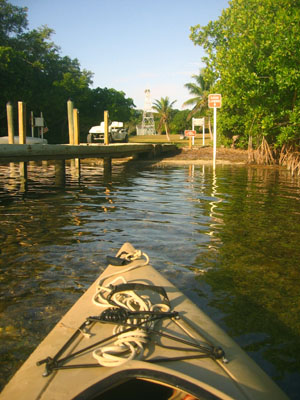

Finally, we arrived at
the dock, pulled up our kayaks, and tied them off to a
mangrove branch. The shoreline was very squishy. >>
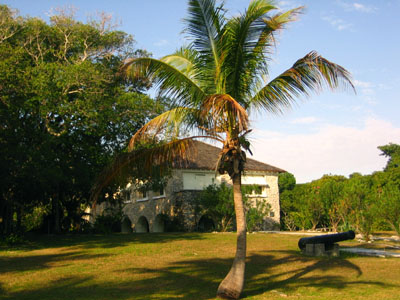 
<< The
caretaker's house is built from local coral rock. The cannons were
from boats; this island was never fortified in its day. The owner never
lived here; he just visited.
|
|
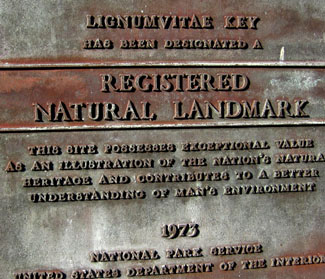 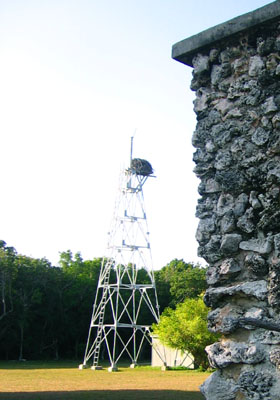
<< This plaque on the the
caretaker's house shows that the island was declared a natural
landmark in 1973.
The tower was originally built for a windmill to generate
power. Now it's home for a family of ospreys. There were
babies in the nest. >>
|
|
|
More on
Lignumvitae & on to Key West >>
Main
Adventure Page
|
|
Top of page:
|







 From
small ecosystems such as the bark of the oak tree (above) to the large
ecosystems such as the grasslands, we enjoyed our private tour and were
impressed with everything the Conservancy is doing here.
From
small ecosystems such as the bark of the oak tree (above) to the large
ecosystems such as the grasslands, we enjoyed our private tour and were
impressed with everything the Conservancy is doing here.










 We
paddled over some very shallow sand bars on our way out to the
island. We thought we might have to get out and portage over
these areas, but we didn't. There was always just enough depth to
paddle across.
We
paddled over some very shallow sand bars on our way out to the
island. We thought we might have to get out and portage over
these areas, but we didn't. There was always just enough depth to
paddle across.



